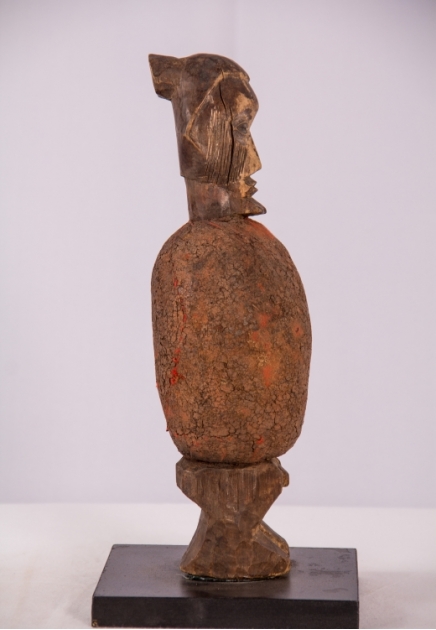Reliquary Figure
The Teke carved wooden reliquary figures with magical substance known as bonga or bilongo applied to a cavity in their abdomen, which was the effective source of their mystical power. Jan Vansina has noted that those persons who could not afford such costly wooden figurative statues, honored and maintained contact with important ancestors through simpler versions, whose contents often included earth taken from burial sites of their ancestors, and were wrapped within an animal pelt or cloth (A. LaGamma). Almost all these statuettes were treated by the Naga, the fetish-man, who carved many of them himself. Each bonga has a specific purpose, such as success in hunting or trading, acquiring wives, increasing property, etc. This statuette is known as Mutinu bmamba. It is covered by a cylindrical- shaped bonga and is used to assist women during pregnancy (J. B. Bacquart). The face bears the typical Teke tribal scarring: incised fine linear furrows running parallel from the upper part of the temples down the sides of the face. The cylindrical trunk, heavy with its unknown bonga, is wrapped with red cloth and coated with a thick layer of mud. The red color of the fabric is a reference to the blood, the life force, in order to increase power, its mystical force. The mud is taken from the burial site of the specific ancestor of the butti's owner (Hottot).
Frank Willett, African Art, 1988, p.160
Jan Vansina cf. in A. LaGamma, Eternal Ancestors, 2007, p.308
Robert Hottot and Frank Willet, Teke Fetishes, Journal of the Royal Anthropological Institute, 1956, pp 26-36
J. B. Bacquart, The Tribal arts of Africa, 1998, p.132.




